Today we want to examine dorsal hoof capsule distortions (HCD), high and low syndromes and club feet. All dorsal HCD will again display flares, this time just dorsally. And flares are a sign of improper loading. You may observe a dished hoof or simply a flare at the bottom third of the hoof.
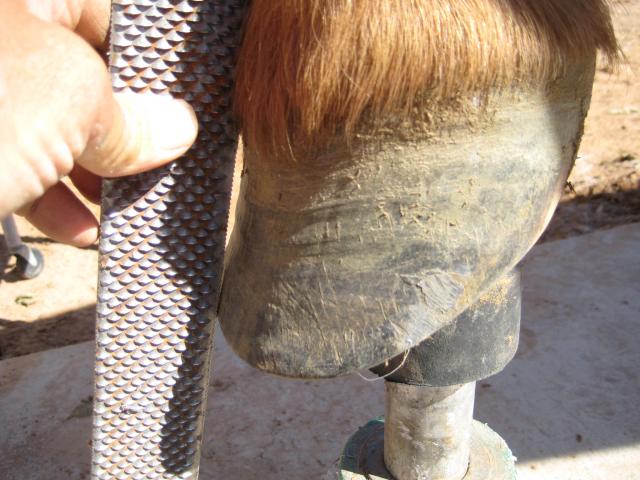
This hoof is placed on a Hoof Jack. Notice the stress lines in the hoof wall, caused by compression.
Now, let’s take a look why dorsal flares happen in the first place. Most of the time, you only see these flares on one of the front hooves. The other one will show signs of a long toe and low heels, often underrun or crushed.
-Genetic
-Injury
-Lack of exercise in young horses
-Habitual stance while grazing
-Long legs/short neck conformation
Hoof growth follows the path of least resistance. That means that any hoof will grow more where there is less pressure and less where there is more. A horse with one of his front feet ahead of his shoulders will place more pressure over the heels, therefore less growth will occur there. At the same time, the toe bears minimal weight, hence the toe grows more (long).
The other leg is place behind the shoulder, therefore more pressure is placed on the toe, so we are not seeing much growth there, less pressure or no weight is placed over the heel, therefore a lot of heel growth and high heels will result.
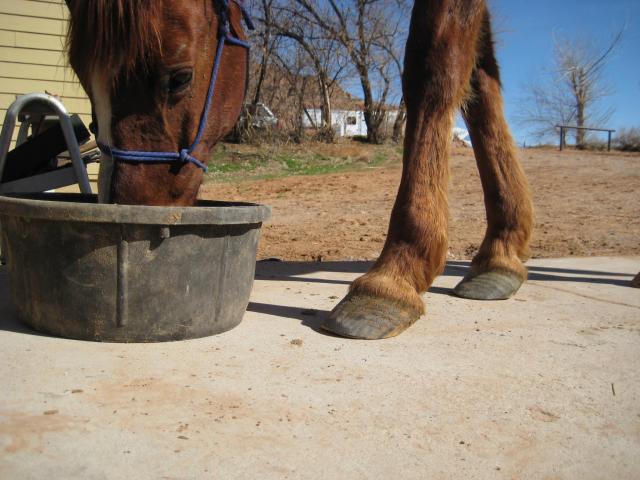
Notice the typical high/low syndrome.
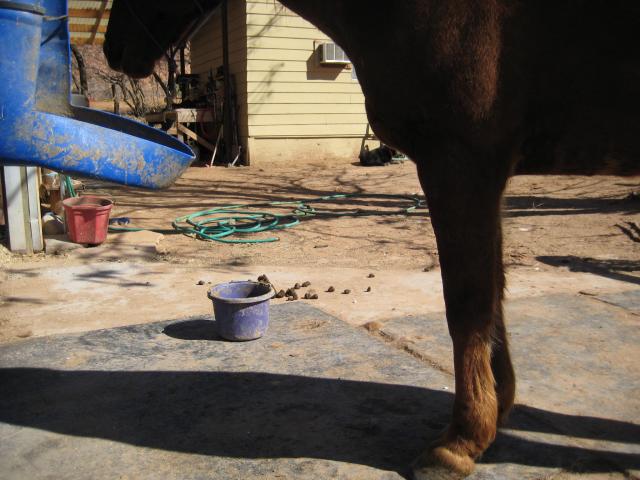
Changing the feeding environment can help mitigating the high/low syndrome.
For the rider, a horse with this issue will always favor the lead with the lower angled hoof leg. This leg has generally more strength, the shoulder will be more developed. It’s the rider’s responsibility to train the weaker shoulder/leg by posting on that side in a trot and using the weaker leg (that is the one with the higher heel) as the leading leg in the canter.
In extreme cases, the dished/flared hoof can develop into a club foot. Club feet vary in severity. Proper management as outlined above, together with frequent trimming, can reduce a clubfoot with time. A true clubfoot, though, one where the coffin bone is rotated downward, cannot be changed. These clubfeet are mostly hereditary and horses with this conformation have soundness issues and should not be bred.
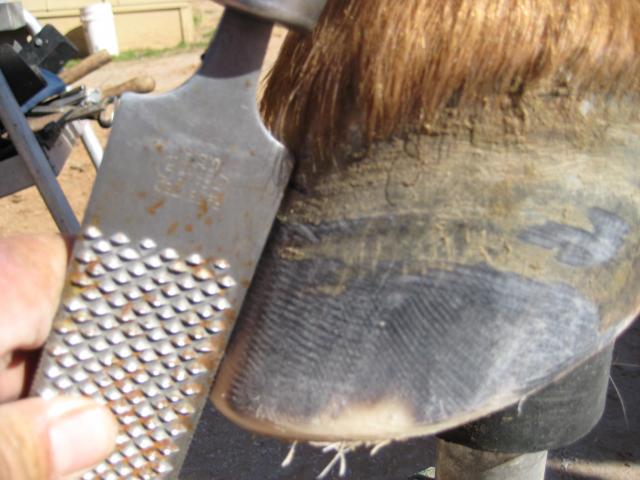
After trimming the flares off the dorsal hoof wall, lowering the heel to the appropriate height,
both hooves were matched.
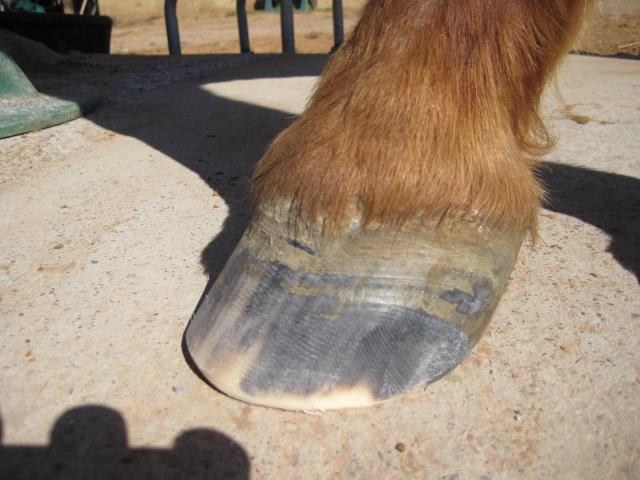
Another HCD is the dorsal hoof wall thickening, or bull-nosed foot. It displays a convex dorsal hoof wall. In extreme cases, the distal phalanx is rotated upward at the toe, heels may be crushed. It can often be observed in horses that land heavy on the heels, thus exerting excess pressure on the coffin bone, which in turn pushes upward inside the hoof capsule. Steel horse shoes often compound that problem. These hoof wall thickenings need to be removed.
A couple of examples are below:
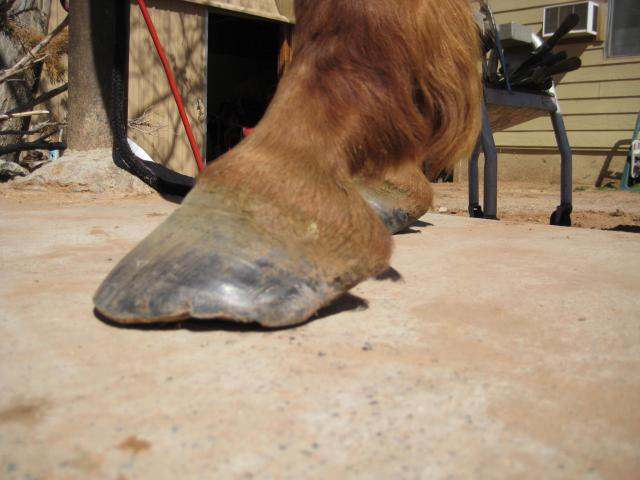
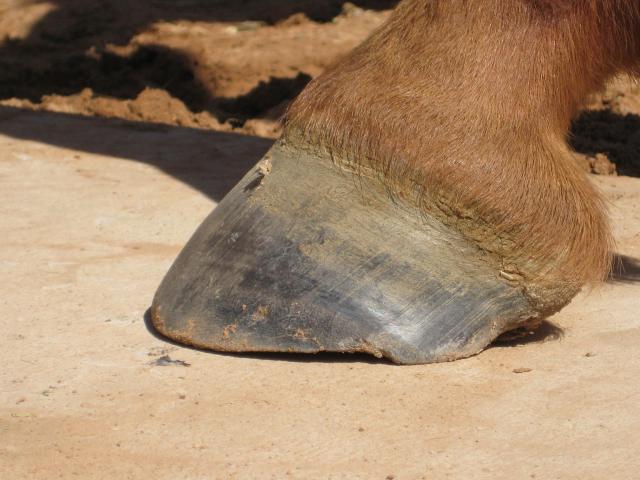
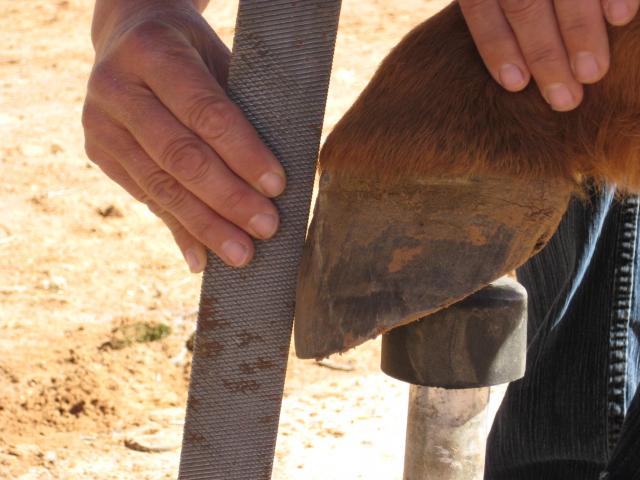
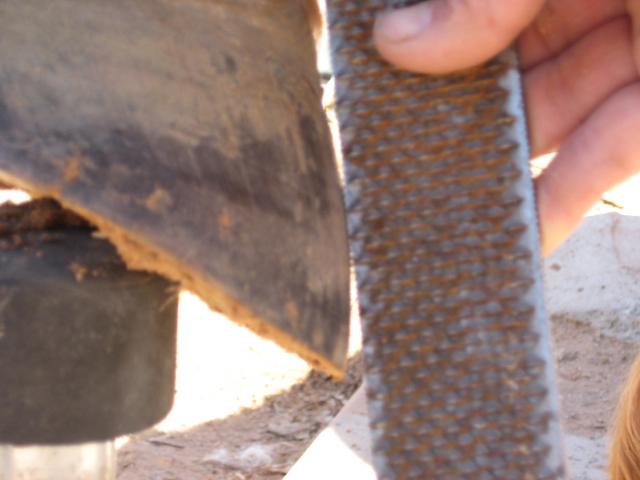
After dressing down the bull-nose:
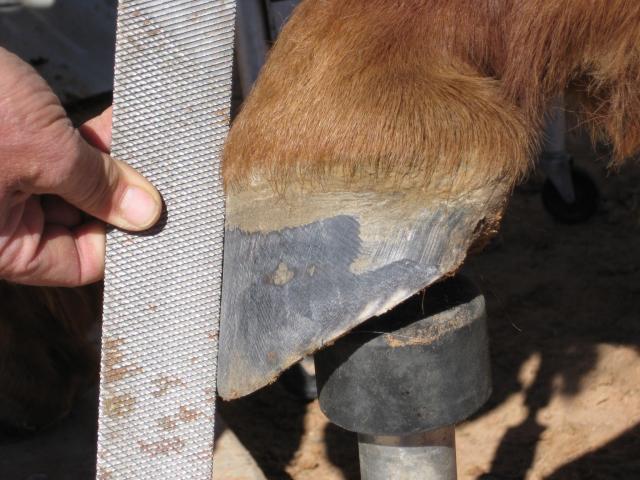
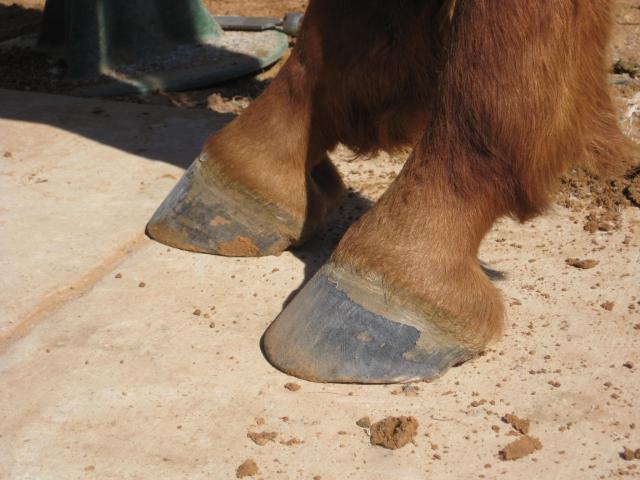
Removing all hoof capsule distortions is crucial to your success with Easy Boots for Horses. Regardless of your preference, Glue-on boots or Gloves, your horse hoof trimming needs to result in straight walls. Otherwise you might have problems with proper fit, compromised seal and hoof glue adhesion.
Till the next time!
Your Bootmeister





Excellent article Christoph! Concise and to the point. I like your observation about canter leads….something I was aware of but didn’t contect it to the HHLH syndrome. High heel/low heel syndrome is genetic and I’m very sure of that although you may find some cases that are a symptom. Not sure about the eating with one foot forward; kind of like the chicken and the egg analogy. Yes, it varies in degrees and severity and barefoot hoof management is an excellent way to deal with these feet.
Thank you! This was extremely helpful. Taking responsibility for my own horse’s foot care is the best thing that has happened in a while. This blog has been a big influence. I also ordered the book by Tim Ware.